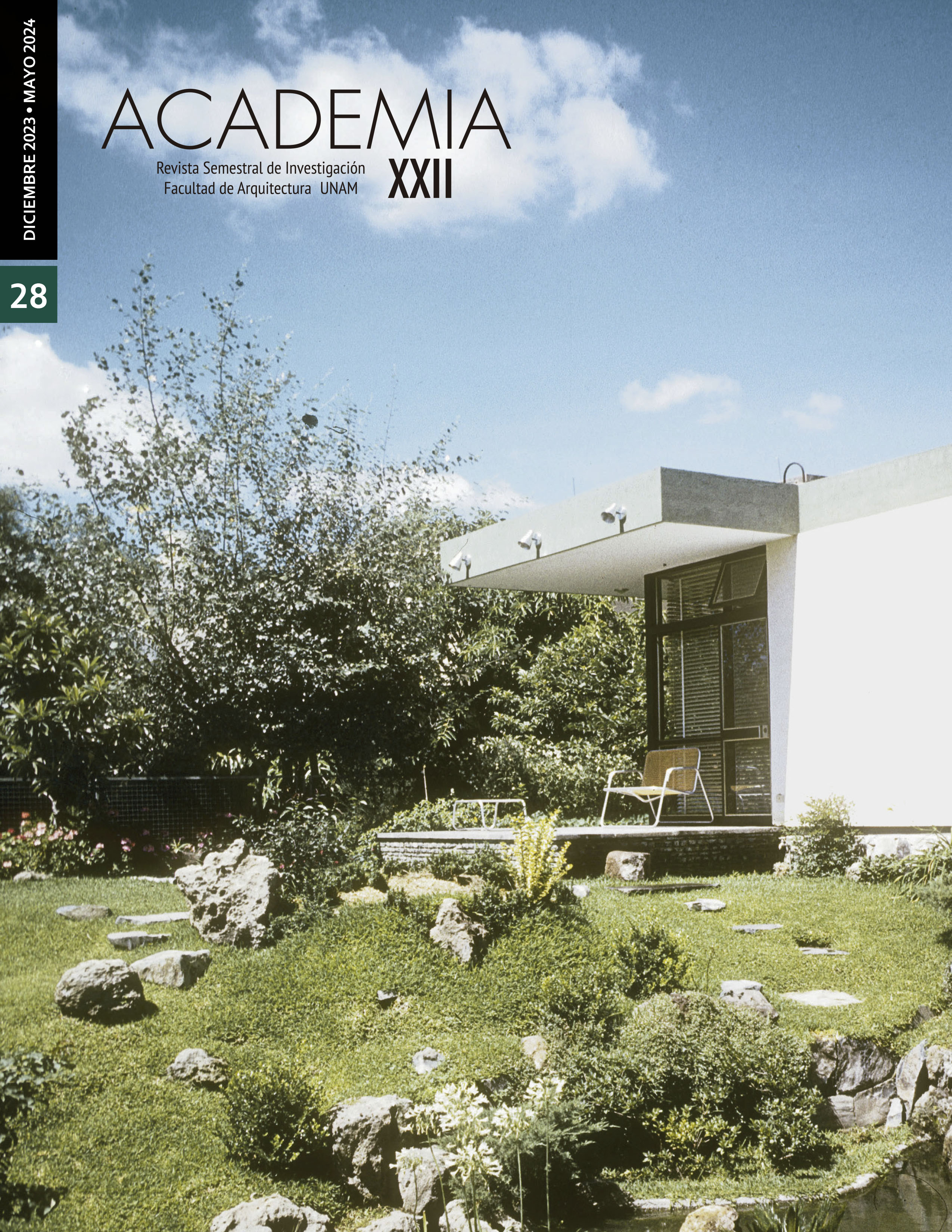Architecture as a natural system. Informational thinking, the ontological mutation of the object and the biologization of architecture
Main Article Content
Abstract
In the digital age, research in biologically inspired architecture has increased. This article develops the thesis that the architectural conceptions underlying these explorations are the result of an ontological mutation of the object, derived from the cybernetic framework. In addition, it provides a reflection on the question posed by the call to promote “green: the organic,” on whether the adoption of biology as an explicative model in architecture can allow nature to act as an agent in shaping the urban-architectural environment.
Downloads
Article Details
References
ALEXANDER, CHRISTOPHER
Notes on the Synthesis of Form, Harvard University Press.
A pattern language: towns, buildings, construction, Oxford University Press.
BERTALANFFY, LUDWIG VON
“General systems theory”, The science of synthesis: exploring the social implications of general systems theory, vol. 103.
BOWKER, GEOF
“How to be universal: Some cybernetic strategies, 1943-70”, Social Studies of Science, vol. 23, núm 1, pp. 107-127.
BOULDING, KENNETH E.
“General systems theory—the skeleton of science”, Management science, vol. 2, núm 3, pp. 197-208.
BRAHAM, WILLIAM
“Biotechniques: Form Follows Flow?”, Departmental Papers (Architecture), p. 21.
GALISON, PETER
“War against the Center”, Grey Room, núm. 4, pp. 7-33.
HAYLES, N. KATHERINE
How we became posthuman: Virtual bodies in cybernetics, literature, and informatics.
HENSEL, MICHAEL U.
“Performance-oriented design from a material perspective: domains of agency and the spatial and material organization complex”, Performalism, Routledge, pp. 43-48.
JOSLYN, CLIFF Y FRANCIS HEYLIGHEN
“Cybernetics”, Encyclopedia of Computer Science, pp. 470-473.
KAY, LILY E.
Who wrote the book of life?: A history of the genetic code, Stanford University Press.
KWINTER, SANFORD
Architectures of time: Toward a theory of the event in modernist culture, MIT Press.
LAZLO, ERVI
The systems view of the world, Blackwell.
LEATHERBARROW, DAVID
“Architecture’s unscripted performance”, Performative Architecture beyond Instrumentality, pp. 7-19.
MOE, KIEL Y R. SMITH
“Introduction: systems, technics, and society”, Building Systems: Design Technology and Society, pp. 1-10.
MORIN, E.
Introduction à la pensée complexe, Éditions du Seuil.
NEUMAN, ERAN Y YASHA J. GROBMAN
“Performalism: A manifesto for architectural performance”, Performalism, Routledge, pp. 3-7.
PICON, ANTOINE
“Digital culture in architecture”, Digital Culture in Architecture, Birkhäuser.
RAHIM, ALI
Catalytic formations: architecture and digital design, Taylor & Francis Group.
ROSENBLUETH, ARTURO, NORBERT WIENER Y JULIAN BIGELOW
“Behavior, purpose and teleology”2, Philosophy of science, vol. 10, núm 1, pp. 18-24.
ROVALETTI, MARÍA LUCRECIA
“Teoría general de los sistemas”, Signo y pensamiento, vol. 8, núm. 15, pp. 45-56.
SCHUMACHER, PATRIK
“Architecture’s next ontological innovation”, Tarp. No Nature, pp. 100-107.
SPRECHER, AARON
“Informationism: Information as architectural performance”, Performalism, Routledge, pp. 27-31.
WIENER, NORBERT
Cybernetics or Control and Communication in the Animal and the Machine, MIT Press.
The human use of human beings: Cybernetics and society, Da Capo Press.

This work is licensed under a Creative Commons Attribution-NonCommercial-NoDerivatives 4.0 International License.

